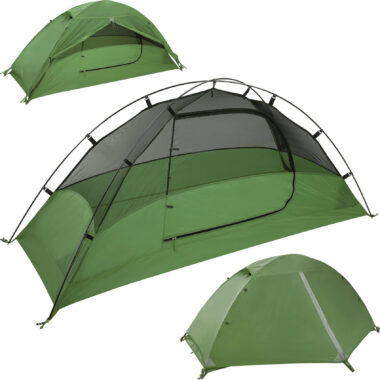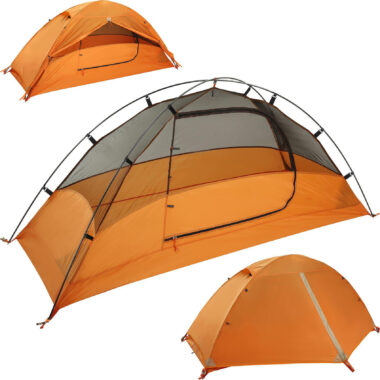🧵 1. Why Material Selection Matters
When it comes to outdoor gear, the fabric defines performance.
A tent’s resistance to wind, rain, and UV damage depends on the materials chosen during production.
Experienced camping tent manufacturers carefully balance weight, strength, and cost to meet different user needs — from ultralight backpacking models to heavy-duty expedition tents.
The right material ensures not only weatherproofing but also comfort, ventilation, and lifespan, making it one of the most critical decisions in custom tent design.
🌧️ 2. Polyester: The All-Round Performer
Polyester is the most widely used tent fabric today. It’s lightweight, affordable, and dries quickly — ideal for 1–2 person and family tents.
Its low water absorption helps it stay taut even in wet conditions.
Manufacturers often enhance polyester with PU (polyurethane) coatings for waterproofing, offering hydrostatic head levels from 1500 mm up to 5000 mm.
For long-term exposure, UV-resistant polyester fabrics are preferred.
This balance of performance and cost makes polyester the go-to material for OEM and wholesale camping tents.
🌄 3. Nylon: Lightweight and Strong
Nylon is favored for premium and technical tents, especially backpacking or mountaineering models.
It offers excellent tear strength and elasticity, allowing the tent to flex in strong wind instead of ripping.
However, nylon tends to absorb moisture and stretch slightly when wet — a drawback offset by applying silicone or dual coatings on both sides.
Silicone-coated nylon, often called silnylon, provides exceptional waterproof performance (up to 6000 mm) and tear resistance, making it a top choice for performance-driven tent lines.
🏕️ 4. Canvas: Traditional but Luxury-Grade
Canvas (cotton or poly-cotton blend) remains the material of choice for glamping tents and safari lodges.
It’s heavier but highly breathable, regulating temperature naturally.
Canvas can be treated with wax, silicone, or PU coatings for waterproofing while retaining its classic look and comfort.
Though not ideal for lightweight tents, it’s perfect for luxury or semi-permanent setups where brand experience and aesthetics matter most.
Many custom tent factories now offer sustainable, eco-treated canvas options for resorts and event suppliers.
💧 5. Coatings and Finishes: PU vs. Silicone
Coatings determine how a tent handles moisture and UV exposure.
PU (Polyurethane) is affordable, versatile, and allows heat-sealed seams — widely used for mass production.
Silicone coating provides better UV stability and tear strength but requires special seam sealing.
For hybrid performance, some factories use PU-silicone dual coating, combining cost-efficiency and durability.
Professional tent suppliers often perform lab tests for hydrostatic pressure, ensuring the coating’s waterproof integrity before bulk manufacturing.
🔍 6. Floor and Mesh Materials
Tent floors endure the most stress and require thicker waterproof fabrics, such as 210D Oxford or PE laminated material.
These prevent ground moisture and abrasion damage.
For ventilation, B3-grade mesh or no-see-um netting keeps insects out while maintaining airflow — essential for comfort in humid environments.
A factory with precise cutting and sealing equipment can ensure consistent protection from ground and weather elements.
🧪 7. Testing and Quality Verification
Every reliable manufacturer conducts material testing before mass production:
Hydrostatic head tests (for waterproof rating)
UV exposure simulation
Tear and tensile strength tests
Coating adhesion checks
These steps ensure the final tents meet performance claims and maintain consistency across every shipment.
Buyers can request sample reports to verify that materials meet both OEM specifications and outdoor performance standards.
🌍 8. Final Thoughts
Selecting the right fabric and coating defines how your camping tents perform in real-world conditions.
Whether polyester for cost efficiency, nylon for performance, or canvas for luxury, each option fits different market segments.
Work with a tent factory that provides transparent testing, flexible customization, and expert guidance — ensuring every tent balances waterproofing, strength, and comfort for your customers.








